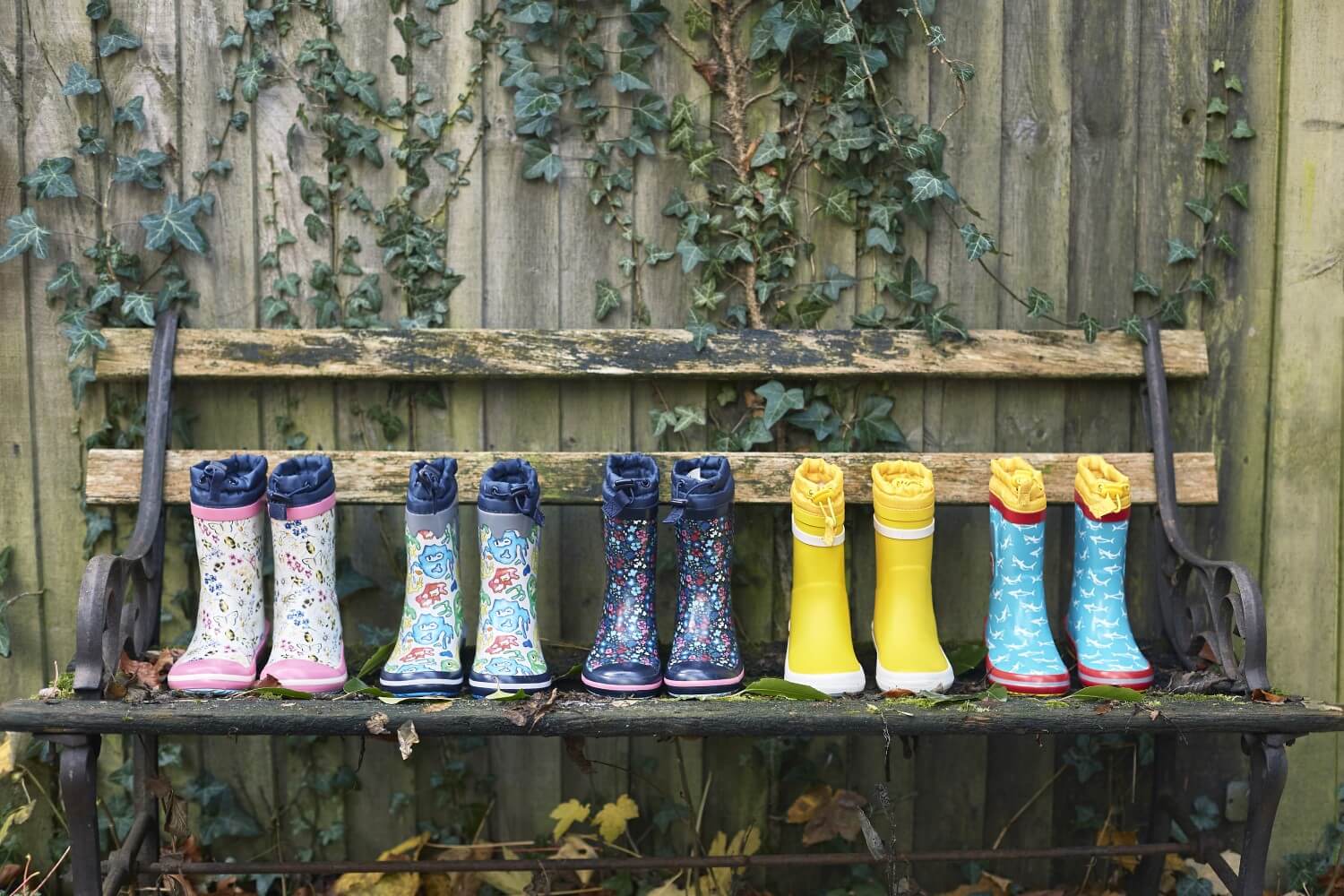
Children love to play in the Great Outdoors, but it can be a messy place! From sticky mud to gritty sand and powdery snow, there are plenty of opportunities for little ones to get wet and dirty.
Investing in a quality pair of wellies can keep your kids’ feet dry and clean no matter what, allowing them to explore the outdoors without worrying about the weather. But without the proper care, wellington boots can begin to deteriorate before your children have grown out of them. In order to extend their lifespan and keep them looking like new for longer, it’s important that wellies are properly stored and cared for.
When they were new, your wellington boots may have looked so shiny you could see your own face reflected back at you. Now, however, they might resemble two faded shadows of what they once were. This is why welly storage and maintenance is so important.
Below, you can find our top tips that could prolong the life of yours and your children’s wellington boots. When the wet weather returns, you’ll be proud to take them out of storage and show them off.
Many people remove their wellies either using the toe of the other foot or the overhang of an outdoor step. However, each time you do this, you risk tearing the heel of the welly and it will begin to weaken over time.
In order to avoid causing damage to your boots, you should instead remove them either with your hands or a boot remover.
To take them off with your hands, you should sit down and rest your foot over the opposite knee. Place one hand around the back of the heel and one on the toes and gently wiggle the boot until it loosens and comes off.
Removing your wellies with a boot jack is easy too. Simply slot the V-shaped end around the heel of the boot and use your other foot to apply a little bit of pressure. This will keep the welly in place while you ease your foot out of it.
At Start-Rite, we’ve anticipated that children find it easier to use the toe of their other foot to remove their wellies. This is why our Puddle wellington boots have a handy, built-in heel kick so they can be removed easily without damage.
The substances that our wellies come into contact with can begin to alter their appearance. Salt, either from sea water or grit, can start to fade those beautiful, bright colours that we associate wellies with, and could even make them dry too quickly, causing cracking.
After each use, you should hose the wellies down with clean water to remove the worst of the dirt before it dries on. Mud is much harder to remove once it’s dried, so doing it as soon as you get home is the best practice.
If the dirt has dried, you can use a soft brush to remove the worst of the mud, and then use water to clean the rest. Finding that water alone isn’t quite doing the job? You can also use a soft cloth to wipe the mud or grass away.
Once your wellies have been hosed down and cleaned, you should store them to dry in a cool, well-ventilated area. This could be inside the house somewhere, or perhaps in a garage or shed. They should be kept out of direct sunlight and away from any extreme heat sources, like a hot radiator.
Wellies shouldn’t be permanently stored outside. While finding a shady spot to leave them to dry temporarily could be a good idea, keeping them outside for too long is not advisable. Rubber reacts with oxygen and will begin to oxidise over time, causing the material to become brittle and maybe even crack. This cannot be helped, however direct sunlight or extreme temperatures (very cold or very hot air) can increase this rate of oxidation, reducing the lifespan of your wellies.
For this reason, you should also avoid leaving them in the car for long periods of time.
To protect the rubber, there are some sprays and oils that can be applied. These can lubricate and moisturise the material to prevent cracking and fading and will prolong the life of your wellies. Not only this, but the solutions can also provide extra UV protection and repel water and mud, meaning you can get more enjoyment out of your favourite pair of wellington boots.
Wellies are made for puddle-splashing, river-wading and ocean-paddling, so of course they’re going to spend a lot of time in the water.
To properly care for your children’s wellies, it’s important that you dry them thoroughly before putting them in storage. Leaving wellies wet or damp could make them smell funny, result in mould and dry out the rubber.
Drying wellies is fairly easy, and there are a few tips and tricks you can use to ensure they’re dried out properly before their next use.
First, you should wipe any excess water from the outside of the wellies using a soft towel.
Second, stuff the boots with newspaper. This will help to absorb any water from the inside, and also helps them to keep their shape. After 24 hours, you can remove the newspaper.
Third, leave the wellies to dry in a well-ventilated, shaded space. If it’s summertime, you can leave them outside in the shade for a short period of time before bringing them in. If it’s winter, place them on some newspaper in front of a warm (not hot) radiator, to slowly dry them out.
Author: Click Consult, published 23-09-2022